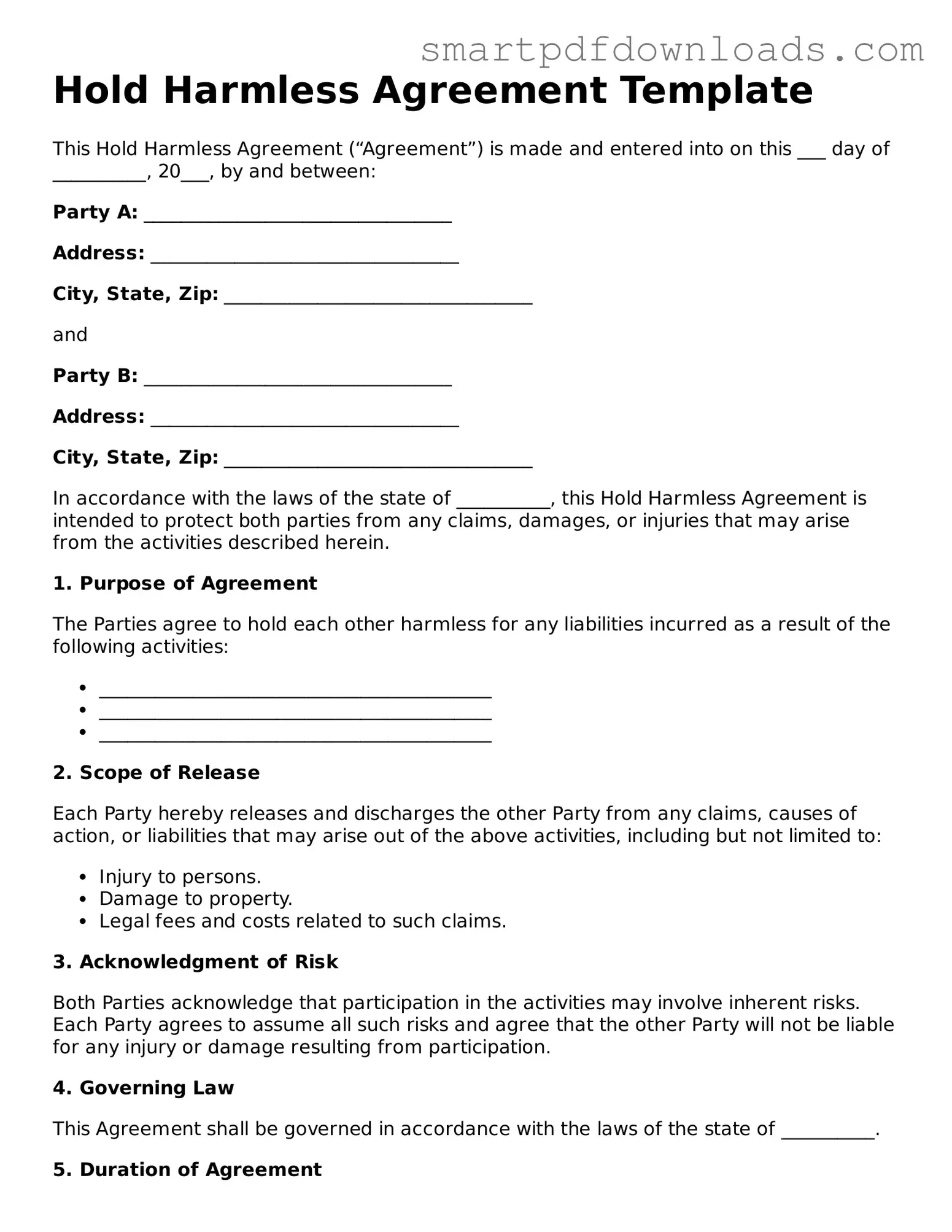Hold Harmless Agreement Template
This Hold Harmless Agreement (“Agreement”) is made and entered into on this ___ day of __________, 20___, by and between:
Party A: _________________________________
Address: _________________________________
City, State, Zip: _________________________________
and
Party B: _________________________________
Address: _________________________________
City, State, Zip: _________________________________
In accordance with the laws of the state of __________, this Hold Harmless Agreement is intended to protect both parties from any claims, damages, or injuries that may arise from the activities described herein.
1. Purpose of Agreement
The Parties agree to hold each other harmless for any liabilities incurred as a result of the following activities:
- __________________________________________
- __________________________________________
- __________________________________________
2. Scope of Release
Each Party hereby releases and discharges the other Party from any claims, causes of action, or liabilities that may arise out of the above activities, including but not limited to:
- Injury to persons.
- Damage to property.
- Legal fees and costs related to such claims.
3. Acknowledgment of Risk
Both Parties acknowledge that participation in the activities may involve inherent risks. Each Party agrees to assume all such risks and agree that the other Party will not be liable for any injury or damage resulting from participation.
4. Governing Law
This Agreement shall be governed in accordance with the laws of the state of __________.
5. Duration of Agreement
This Hold Harmless Agreement will remain in effect for __________ (duration) from the date of execution unless modified or revoked in writing by both Parties.
IN WITNESS WHEREOF, the Parties have executed this Hold Harmless Agreement as of the day and year first above written.
Party A Signature: _________________________________
Date: _________________________________
Party B Signature: _________________________________
Date: _________________________________
